Examining the Ability of Communities to Cope with Food Insecurity due to Climate Change
Abstract
:1. Introduction
2. Materials and Methods
2.1. Theoretical Framework
2.2. Survey Administration
Selection Procedure
2.3. Description of the Study Area
2.4. Data Analysis
3. Results
3.1. Sociodemographic Characteristics
3.2. Resource Availability
3.2.1. Household Assets
3.2.2. Access to Water Sources
3.2.3. Household Income
3.3. Climate Change and Its Effects to the Communities
3.4. Variability in Seasons
3.5. Food Security
3.6. Coping Strategies
3.6.1. Coping Mechanisms Employed by Communities
3.6.2. Effectiveness of Coping Mechanisms
4. Discussion
5. Conclusions and Recommendations
Author Contributions
Funding
Institutional Review Board Statement
Informed Consent Statement
Data Availability Statement
Acknowledgments
Conflicts of Interest
References
- FAO. Food Security Indicators; FAO Statistics: Rome, Italy, 2019. [Google Scholar]
- World Food Summit. Rome Declaration on World Food Security and World Food Summit Plan of Action Rome Declaration on World Food Security; World Food Summit: Rome, Italy, 1996. [Google Scholar]
- Hall, C.; Dawson, T.P.; Macdiarmid, J.I.; Matthews, R.B.; Smith, P. The impact of population growth and climate change on food security in Africa: Looking ahead to 2050. Int. J. Agric. Sustain. 2017, 15, 124–135. [Google Scholar] [CrossRef] [Green Version]
- WHO. The state of food security and nutrition in the world 2019: Safeguarding against economic slowdowns and downturns. Food Agric. Org. 2019, 2019, 3–25. [Google Scholar]
- Wossen, T.; Berger, T.; Haile, M.G.; Troost, C. Impacts of climate variability and food price volatility on household income and food security of farm households in East and West Africa. Agric. Syst. 2018, 163, 7–15. [Google Scholar] [CrossRef]
- Tegebu, F.N. Climate Change-Induced Migration in the Horn of Africa; University of the Witwatersrand: Johannesburg, South Africa, 2020. [Google Scholar]
- Antonelli, C.; Coromaldi, M.; Dasgupta, S.; Emmerling, J.; Shayegh, S. Climate impacts on nutrition and labor supply disentangled—An analysis for rural areas of Uganda. Environ. Dev. Econ. 2020, 26, 512–537. [Google Scholar] [CrossRef]
- Tacoli, C. Food (in) security in rapidly urbanising, low-income contexts. Int. J. Environ. Res. Public Health 2017, 14, 1554. [Google Scholar] [CrossRef] [PubMed] [Green Version]
- Stites, E. The Only Place to Do This is in Town: Experiences of Rural–Urban Migration in Northern Karamoja, Uganda. Nomad. People 2020, 24, 32–55. [Google Scholar] [CrossRef]
- Wichern, J.; van Wijk, M.T.; Descheemaeker, K.; Frelat, R.; van Asten, P.J.A.; Giller, K.E. Food availability and livelihood strategies among rural households across Uganda. Food Secur. 2017, 9, 1385–1403. [Google Scholar] [CrossRef] [Green Version]
- Spires, M.; Berggreen-Clausen, A.; Kasujja, F.X.; Delobelle, P.; Puoane, T.; Sanders, D.; Daivadanam, M. Snapshots of urban and rural food environments: EPOCH-based mapping in a high-, middle-, and low-income country from a non-communicable disease perspective. Nutrients 2020, 12, 484. [Google Scholar] [CrossRef] [PubMed] [Green Version]
- Lunyolo, L.D.; Khalifa, M.; Ribbe, L. Assessing the interaction of land cover/land use dynamics, climate extremes and food systems in Uganda. Sci. Total. Environ. 2021, 753, 142549. [Google Scholar] [CrossRef] [PubMed]
- Nsubuga, F.W.; Rautenbach, H. Climate change and variability: A review of what is known and ought to be known for Uganda. Int. J. Clim. Chang. Strateg. Manag. 2018, 10, 752–771. [Google Scholar] [CrossRef] [Green Version]
- Shi, C.; Jiang, Z.H.; Chen, W.L.; Li, L. Changes in temperature extremes over China under 1.5 °C and 2 °C global warming targets. Adv. Clim. Chang. Res. 2018, 9, 120–129. [Google Scholar] [CrossRef]
- King, A.D.; Harrington, L.J. The Inequality of Climate Change From 1.5 to 2 °C of Global Warming. Geophys. Res. Lett. 2018, 45, 5030–5033. [Google Scholar] [CrossRef]
- Mubiru, D.N.; Radeny, M.; Kyazze, F.B.; Zziwa, A.; Lwasa, J.; Kinyangi, J.; Mungai, C. Climate trends, risks and coping strategies in smallholder farming systems in Uganda. Clim. Risk Manag. 2018, 22, 4–21. [Google Scholar] [CrossRef]
- Ozor, N.; Madukwe, M.; Enete, A.; Amaechina, E.; Onokala, P. Barriers to Climate Change Adaptation Among Farming Households of Southern Nigeria. J. Agric. Ext. 2011, 14, 114–124. [Google Scholar] [CrossRef]
- Cooper, S.J.; Wheeler, T. Rural household vulnerability to climate risk in Uganda. Reg. Environ. Chang. 2017, 17, 649–663. [Google Scholar] [CrossRef]
- Mechiche-Alami, A.; Yagoubi, J.; Nicholas, K.A. Agricultural land acquisitions unlikely to address the food security needs of African countries. World Dev. 2021, 141, 105384. [Google Scholar] [CrossRef]
- FAO. Climate Change in Africa: The Threat to Agriculture; Food and Agriculture Organization: Rome, Italy, 2009; p. 7. [Google Scholar]
- Wrigley-Asante, C.; Owusu, K.; Egyir, I.S.; Owiyo, T.M. Gender dimensions of climate change adaptation practices: The experiences of smallholder crop farmers in the transition zone of Ghana. African Geogr. Rev. 2019, 38, 126–139. [Google Scholar] [CrossRef]
- Bryan, E.; Bernier, Q.; Espinal, M.; Ringler, C. Making climate change adaptation programmes in sub-Saharan Africa more gender responsive: Insights from implementing organizations on the barriers and opportunities. Clim. Dev. 2018, 10, 417–431. [Google Scholar] [CrossRef]
- Alhassan, S.I.; Kuwornu, J.K.M.; Osei-Asare, Y.B. Gender dimension of vulnerability to climate change and variability. Int. J. Clim. Chang. Strateg. Manag. 2019, 11, 195–214. [Google Scholar] [CrossRef]
- Ngigi, M.W.; Mueller, U.; Birner, R. Gender differences in climate change adaptation strategies and participation in group-based approaches: An intra-household analysis from rural Kenya. Ecol. Econ. 2017, 138, 99–108. [Google Scholar] [CrossRef]
- Kristjanson, P.; Bryan, E.; Bernier, Q.; Twyman, J.; Meinzen-Dick, R.; Kieran, C.; Ringler, C.; Jost, C.; Doss, C. Addressing gender in agricultural research for development in the face of a changing climate: Where are we and where should we be going? Int. J. Agric. Sustain. 2017, 15, 482–500. [Google Scholar] [CrossRef]
- Eastin, J. Climate change and gender equality in developing states. World Dev. 2018, 107, 289–305. [Google Scholar] [CrossRef]
- Falco, C.; Donzelli, F.; Olper, A. Climate change, agriculture and migration: A survey. Sustainability 2018, 10, 1405. [Google Scholar] [CrossRef] [Green Version]
- Adaawen, S.; Rademacher-Schulz, C.; Schraven, B.; Segadlo, N. Drought, migration, and conflict in sub-Saharan Africa: What are the links and policy options? Curr. Dir. Water Scarcity Res. 2019, 2, 15–31. [Google Scholar]
- Ampaire, E.L.; Acosta, M.; Huyer, S.; Kigonya, R.; Muchunguzi, P.; Muna, R.; Jassogne, L. Gender in climate change, agriculture, and natural resource policies: Insights from East Africa. Clim. Chang. 2020, 158, 43–60. [Google Scholar] [CrossRef] [Green Version]
- Renner, J. New Power Structures and Shifted Governance Agendas Disrupting Climate Change Adaptation Developments in Kenya and Uganda. Sustainability 2020, 12, 2799. [Google Scholar] [CrossRef]
- Larochelle, C.; Alwang, J. Impacts of Improved Bean Varieties Adoption on Dietary Diversity and Food Security in Rwanda. Eur. J. Dev. Res. 2021, 1–23. [Google Scholar] [CrossRef]
- Mubiru, D.N.; Kyazze, F.B.; Radeny, M.; Zziwa, A.; Lwasa, J.; Kinyangi, J. Climatic Trends, Risk Perceptions and Coping Strategies of Smallholder Farmers in Rural Uganda; CGIAR Research Program on Climate Change, Agriculture and Food Security: Copenhagen, Denmark, 2015. [Google Scholar]
- Ciscar, J.-C.; Fisher-Vanden, K.; Lobell, D.B. Synthesis and review: An inter-method comparison of climate change impacts on agriculture. Environ. Res. Lett. 2018, 13, 70401. [Google Scholar] [CrossRef]
- Feyisa, M.N. Determinants of food insecurity among rural households of South Western Ethiopia. J. Dev. Agric. Econ. 2018, 10, 404–412. [Google Scholar]
- Jamshidi, O.; Asadi, A.; Kalantari, K.; Azadi, H.; Scheffran, J. Vulnerability to climate change of smallholder farmers in the Hamadan province, Iran. Clim. Risk Manag. 2019, 23, 146–159. [Google Scholar] [CrossRef]
- Steiner, J.L.; Briske, D.D.; Brown, D.P.; Rottler, C.M. Vulnerability of Southern Plains agriculture to climate change. Clim. Chang. 2018, 146, 201–218. [Google Scholar] [CrossRef] [Green Version]
- Maguza-Tembo, F.; Mangison, J.; Edris, A.K.; Kenamu, E. Determinants of adoption of multiple climate change adaptation strategies in Southern Malawi: An ordered probit analysis. J. Dev. Agric. Econ. 2017, 9, 1–7. [Google Scholar]
- Agidew, A.A.; Singh, K.N. Determinants of food insecurity in the rural farm households in South Wollo Zone of Ethiopia: The case of the Teleyayen sub-watershed. Agric. Food Econ. 2018, 6, 1–23. [Google Scholar] [CrossRef]
- Oriangi, G.; Bamutaze, Y.; Mukwaya, P.I.; Musali, P.; Baldassarre, G.D.; Pilesjö, P. Testing the Proposed Municipality Resilience Index to Climate Change Shocks and Stresses in Mbale Municipality in Eastern Uganda. Am. J. Clim. Change 2019, 8, 520–543. [Google Scholar] [CrossRef] [Green Version]
- Adam, A.M. Sample size determination in survey research. J. Sci. Res. Rep. 2020, 26, 90–97. [Google Scholar] [CrossRef]
- Yamane, I.; Sato, K. Effect of temperature on the decomposition of organic substances in flooded soil. Soil Sci. Plant Nutr. 1967, 13, 94–100. [Google Scholar] [CrossRef]
- Handcock, M.S.; Gile, K.J. Comment: On the concept of snowball sampling. Sociol. Methodol. 2011, 41, 367–371. [Google Scholar] [CrossRef] [Green Version]
- Biernacki, P.; Waldorf, D. Snowball sampling: Problems and techniques of chain referral sampling. Sociol. Methods Res. 1981, 10, 141–163. [Google Scholar] [CrossRef]
- Etikan, I.; Alkassim, R.; Abubakar, S. Comparison of snowball sampling and sequential sampling technique. Biom. Biostat. Int. J. 2016, 3, 164. [Google Scholar]
- Goodman, L.A. Snowball sampling. Ann. Math. Stat. 1961, 32, 148–170. [Google Scholar] [CrossRef]
- Browne, K. Snowball sampling: Using social networks to research non-heterosexual women. Int. J. Soc. Res. Methodol. 2005, 8, 47–60. [Google Scholar] [CrossRef]
- Ghaljaie, F.; Naderifar, M.; Goli, H. Snowball sampling: A purposeful method of sampling in qualitative research. Strides Dev. Med. Educ. 2017, 14. [Google Scholar] [CrossRef] [Green Version]
- Cohen, N.; Arieli, T. Field research in conflict environments: Methodological challenges and snowball sampling. J. Peace Res. 2011, 48, 423–435. [Google Scholar] [CrossRef]
- Emojong, J. Influence of Competence-Based Education Approach on Employee Productivity and Efficiency: A Case of Uganda Revenue Authority Education Programs. Ugandan J. Manag. Public Policy Stud. 2018, 15, 54–76. [Google Scholar]
- Agwot, R.K. Contract Management and Service Delivery in Local Governments in Uganda: A Case of Serere District Local Government. Ph.D. Thesis, Uganda Management Institute, Kampala, Uganda, 2018. [Google Scholar]
- Partey, S.T.; Dakorah, A.D.; Zougmoré, R.B.; Ouédraogo, M.; Nyasimi, M.; Nikoi, G.K.; Huyer, S. Gender and climate risk management: Evidence of climate information use in Ghana. Clim. Chang. 2020, 158, 61–75. [Google Scholar] [CrossRef] [Green Version]
- Uganda Bureau of Statistics. The National Population and Housing Census 2014—Area Specific Profile Series. 2016. Available online: https://www.ubos.org/wp-content/uploads/publications/03_20182014_National_Census_Main_Report.pdf (accessed on 30 September 2021).
- Mugume, I.; Semyalo, R.; Wasswa, P.; Ngailo, T.; Odongo, I.R.; Lunyolo, J.; Tao, S. Community views on water demands under a changing climate: The case of River Mpanga Water Catchment, Western Uganda. Afr. J. Environ. Sci. Technol. 2021, 15, 371–378. [Google Scholar]
- Ratna, S.B.; Ratnam, J.V.; Behera, S.K.; Rautenbach, C.D.; Ndarana, T.; Takahashi, K.; Yamagata, T. Performance assessment of three convective parameterization schemes in WRF for downscaling summer rainfall over South Africa. Clim. Dyn. 2014, 42, 2931–2953. [Google Scholar] [CrossRef] [Green Version]
- Bryman, A. Social Research Methods; Oxford Univiversity Press: Oxford, UK, 2016. [Google Scholar]
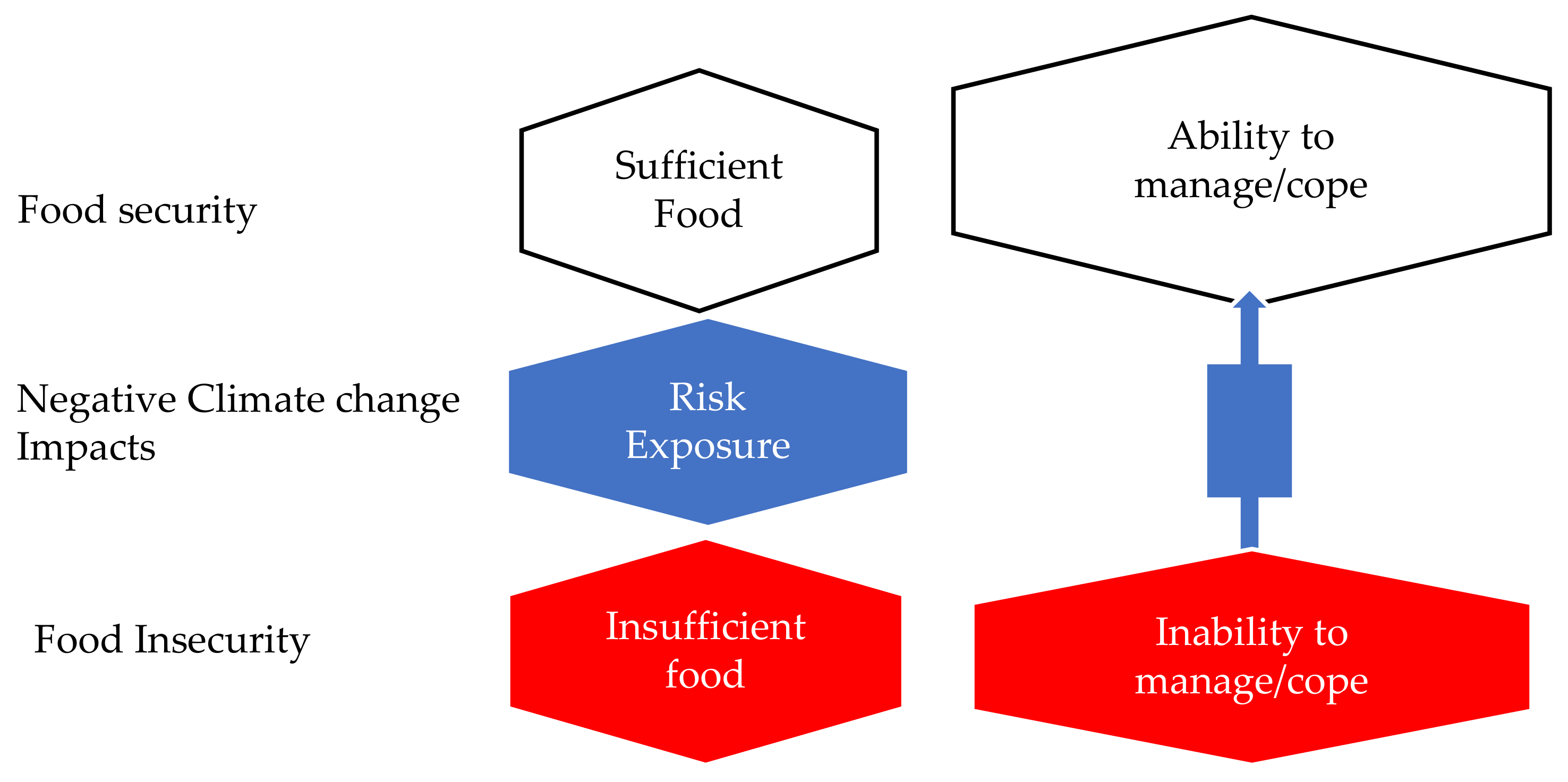
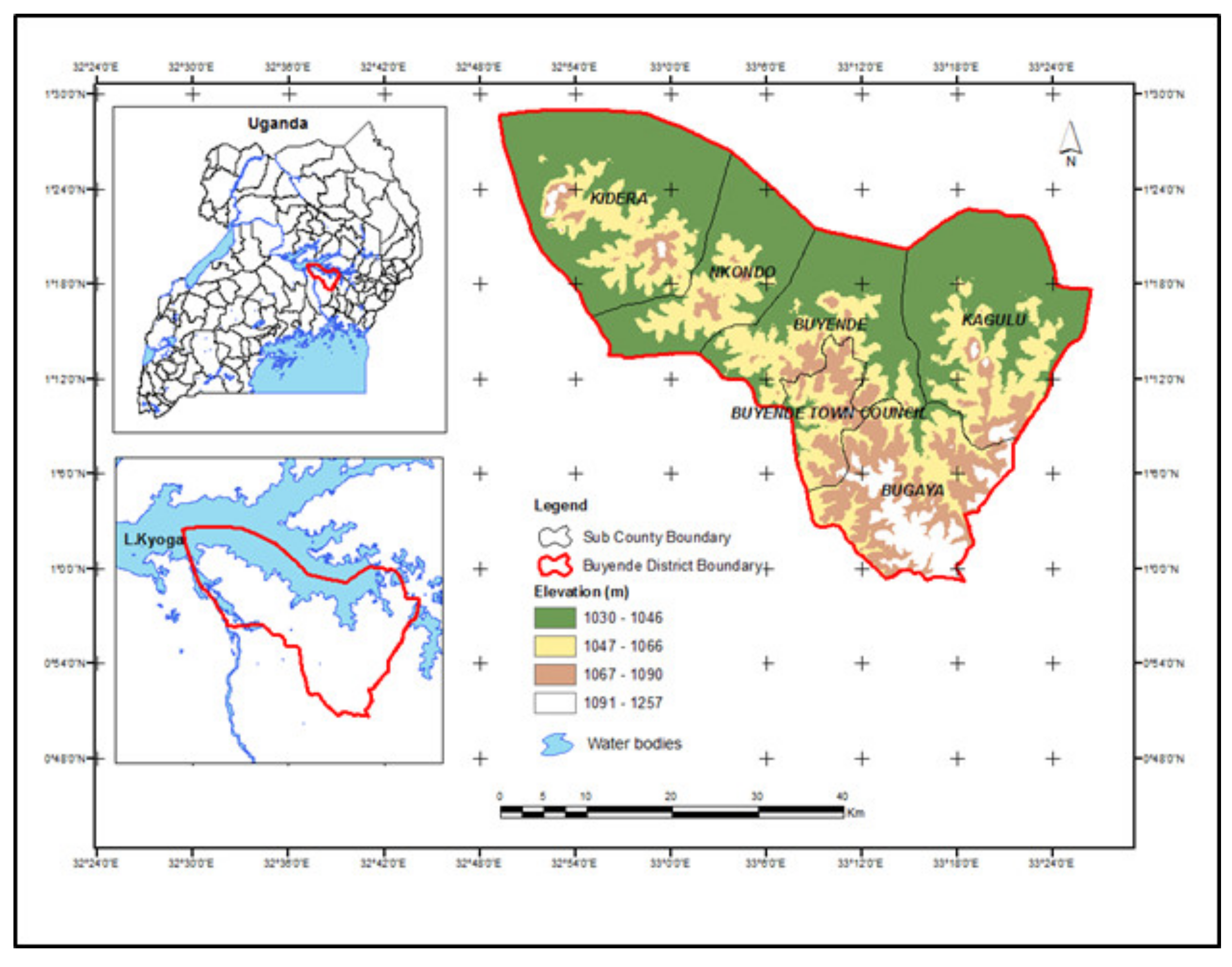
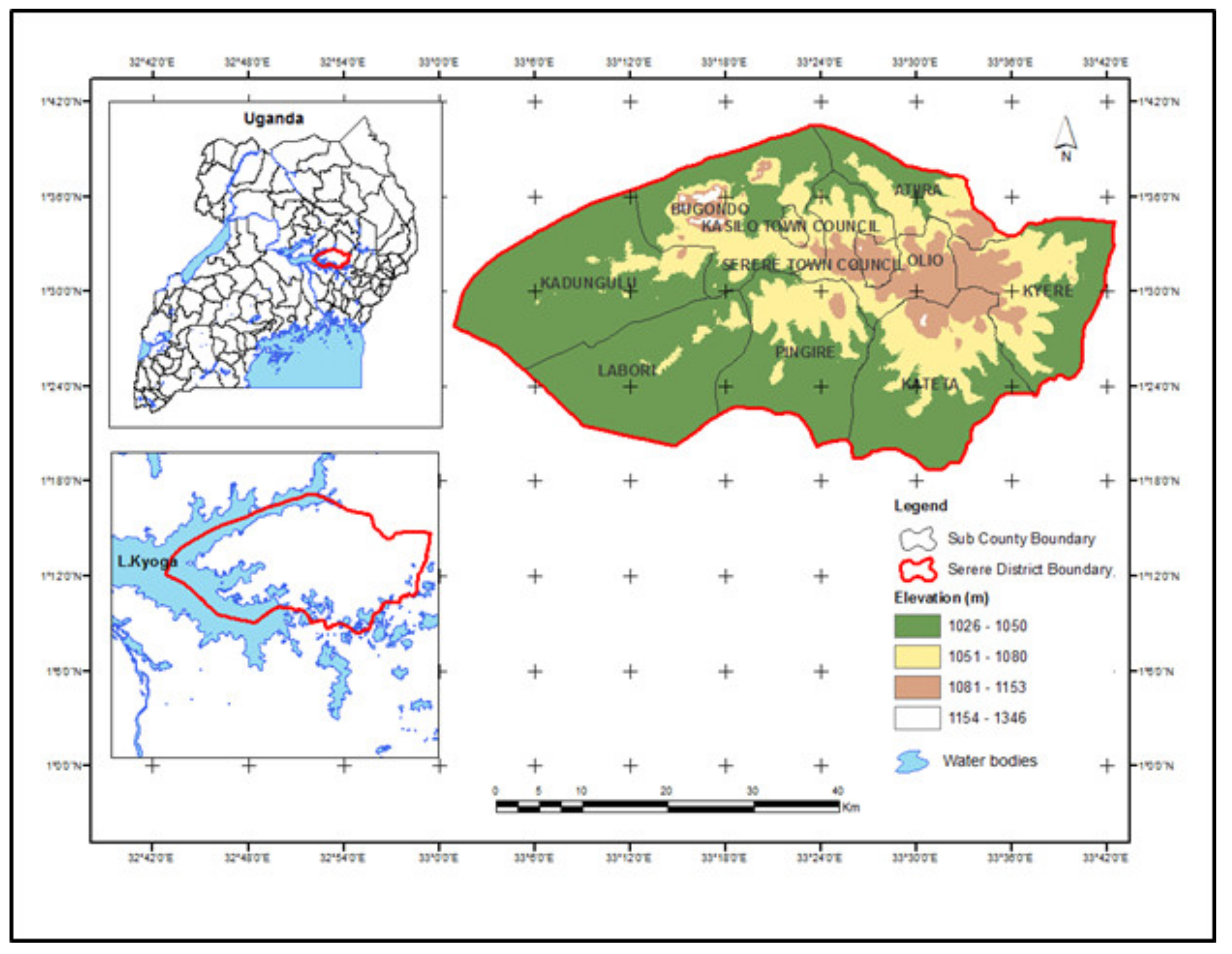
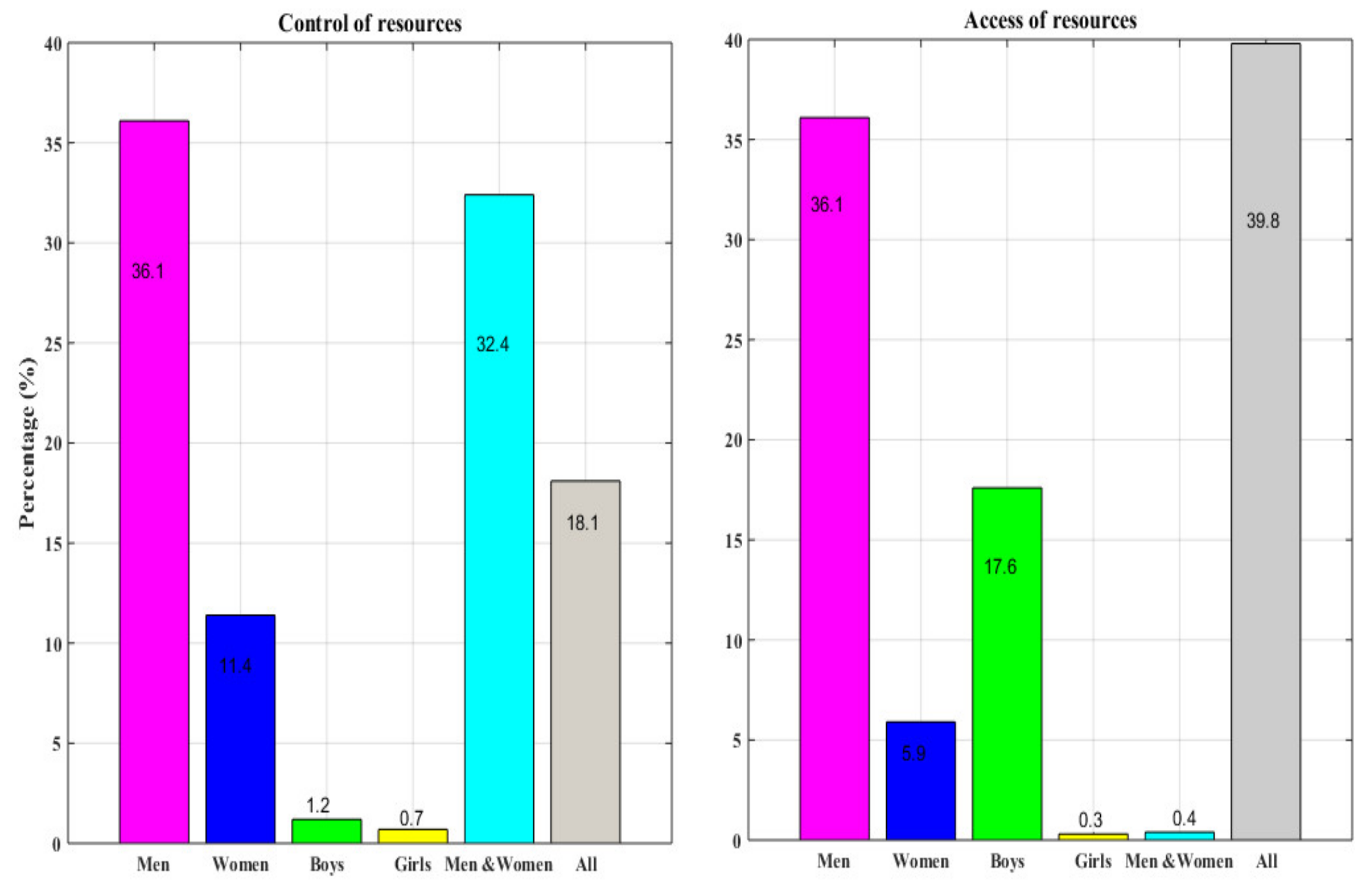
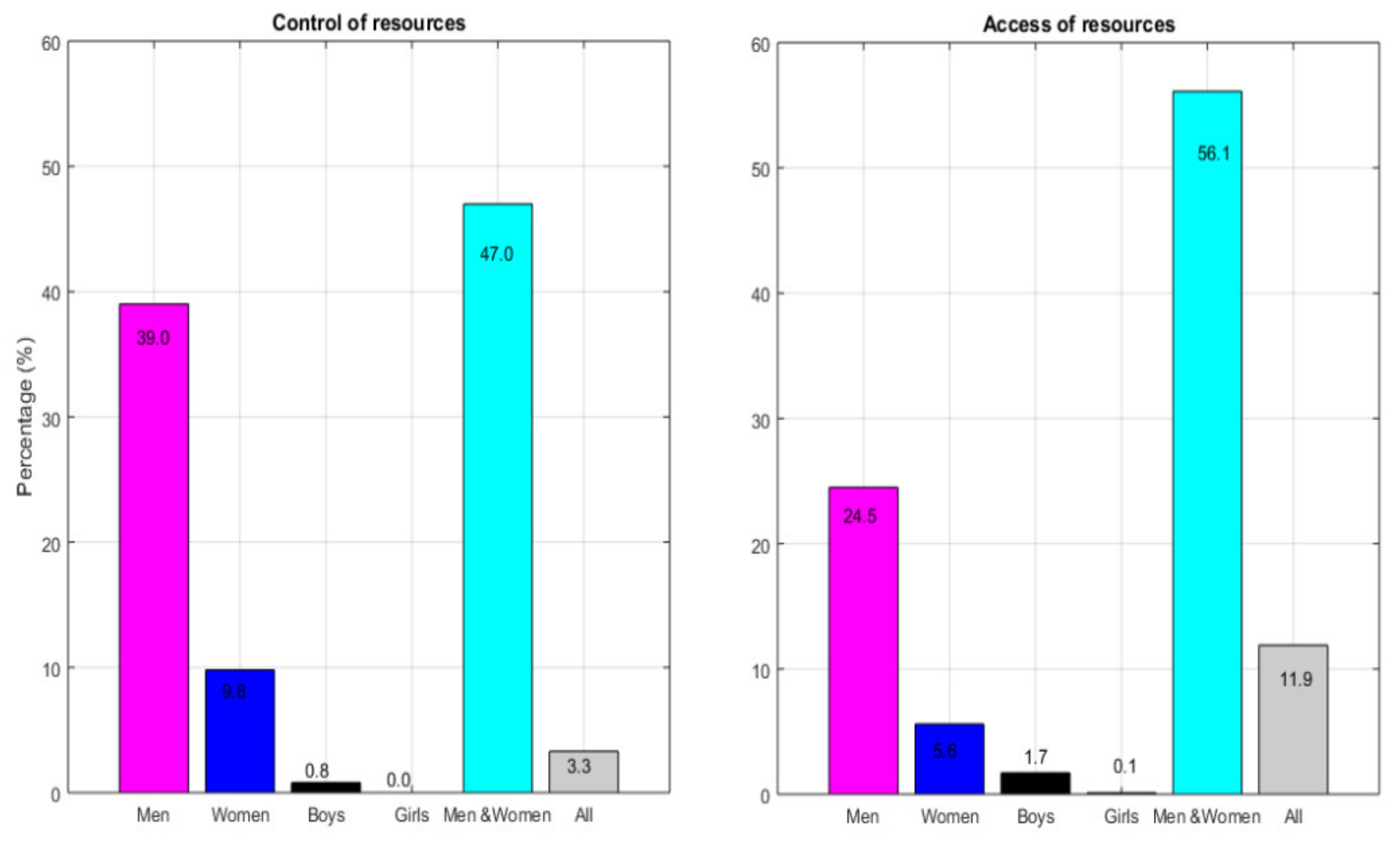
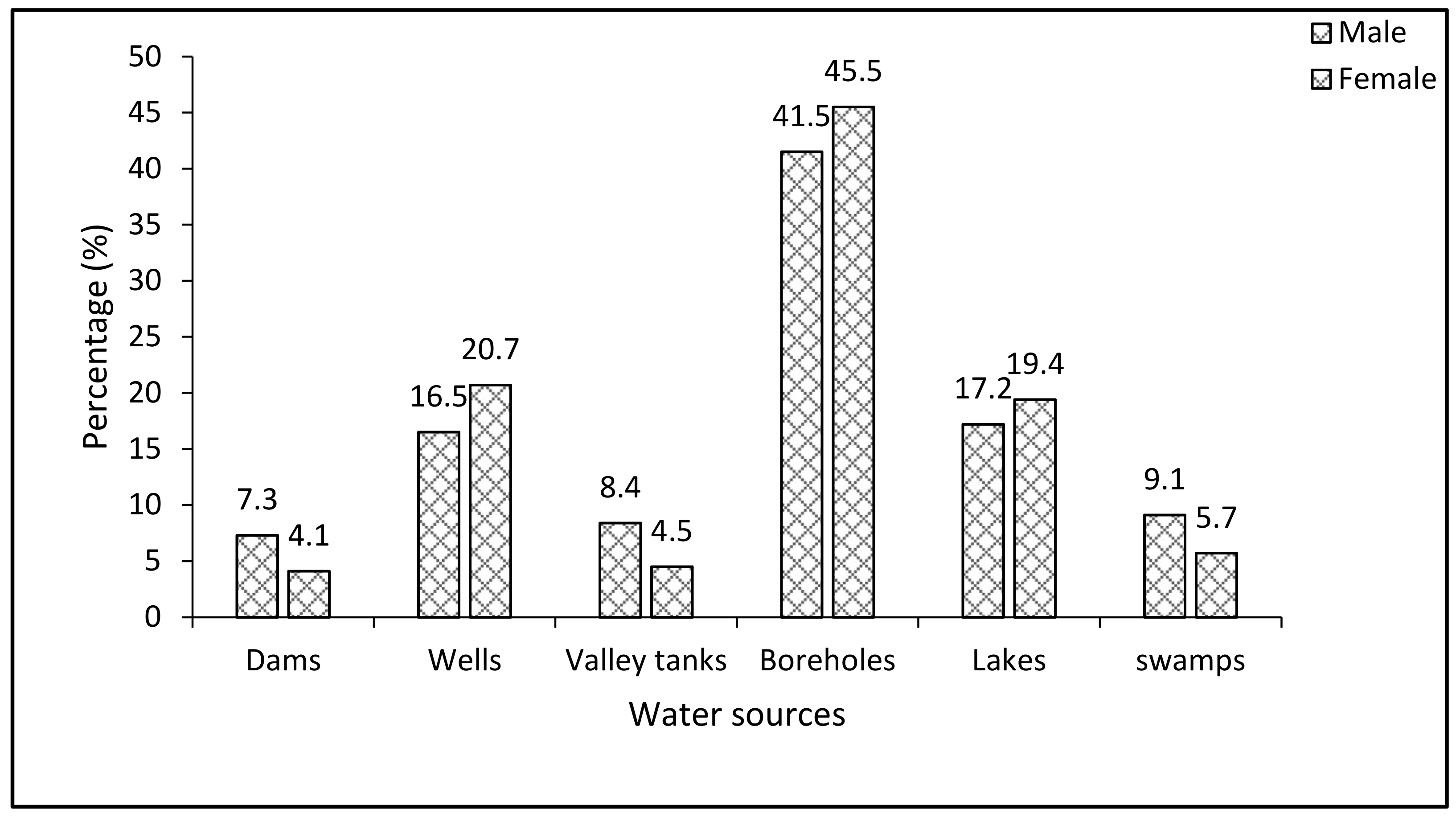
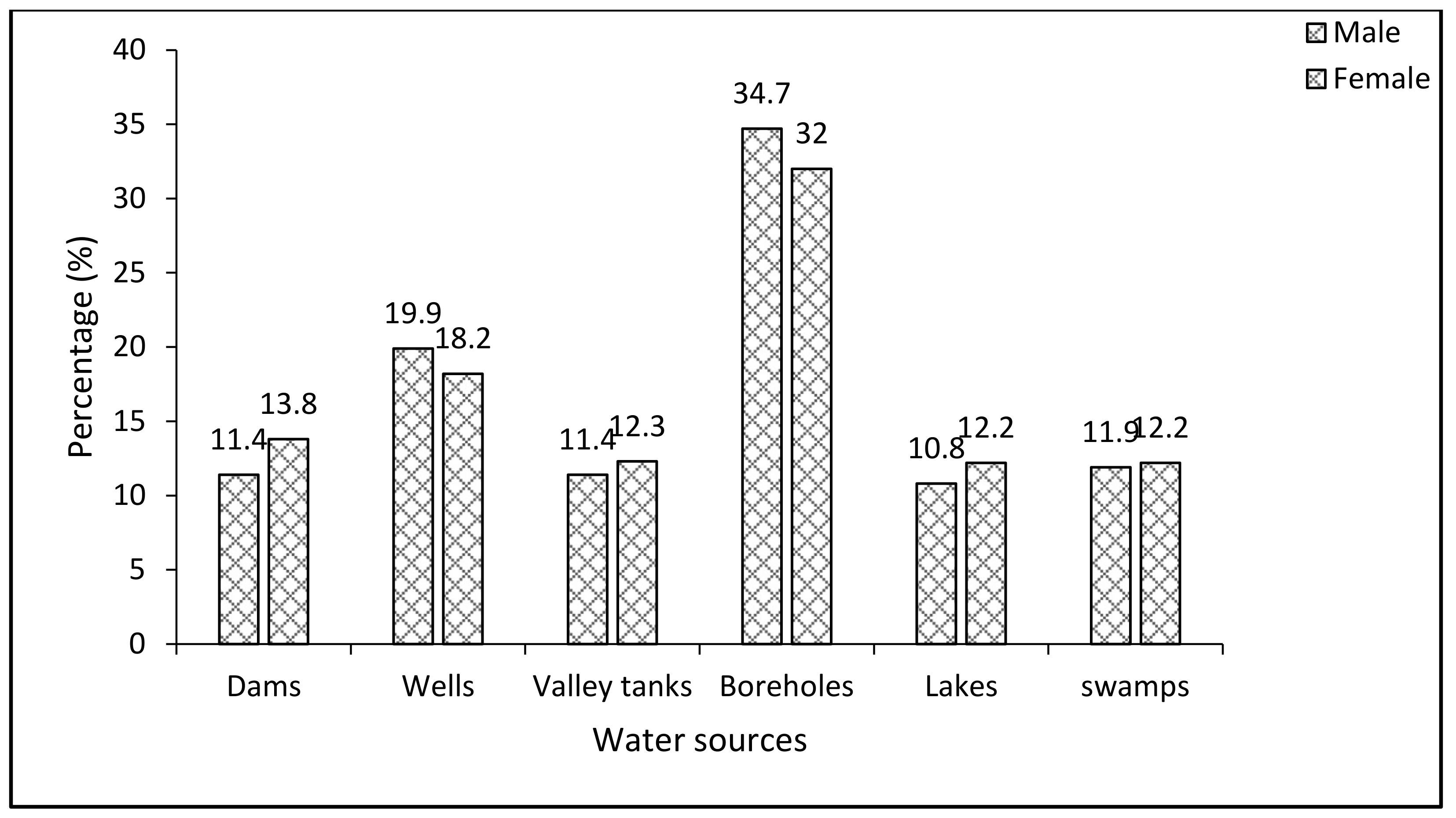
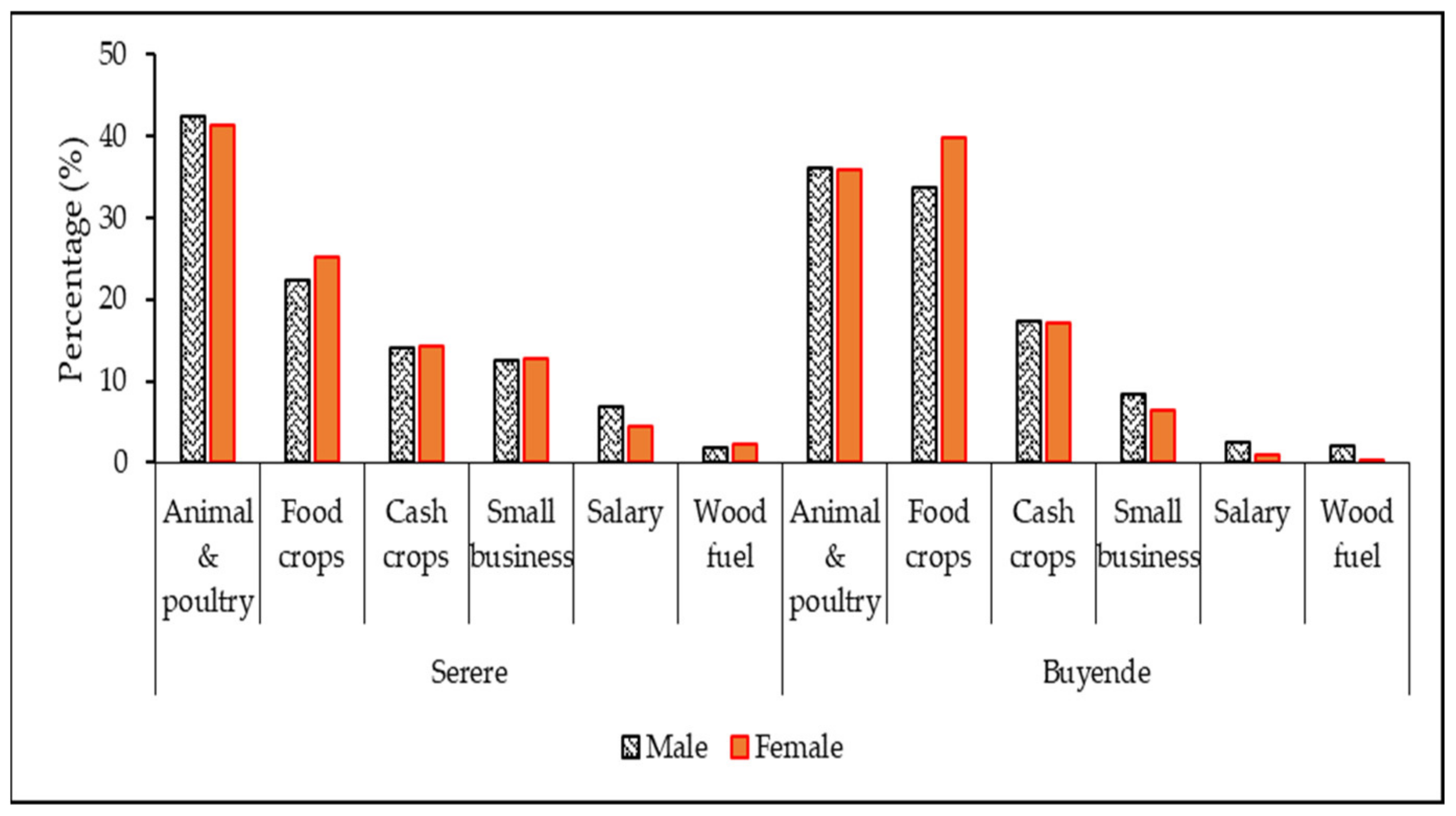
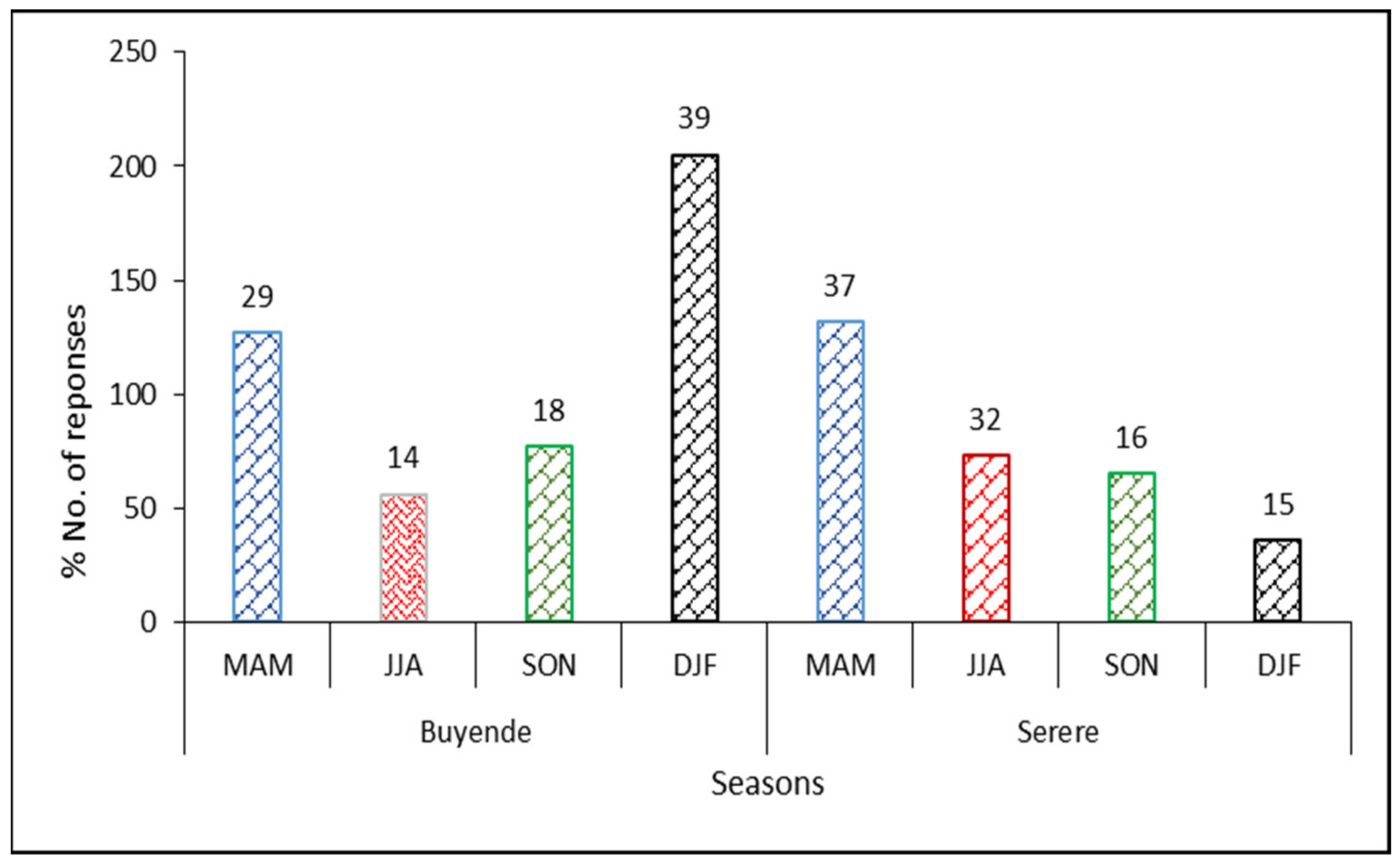
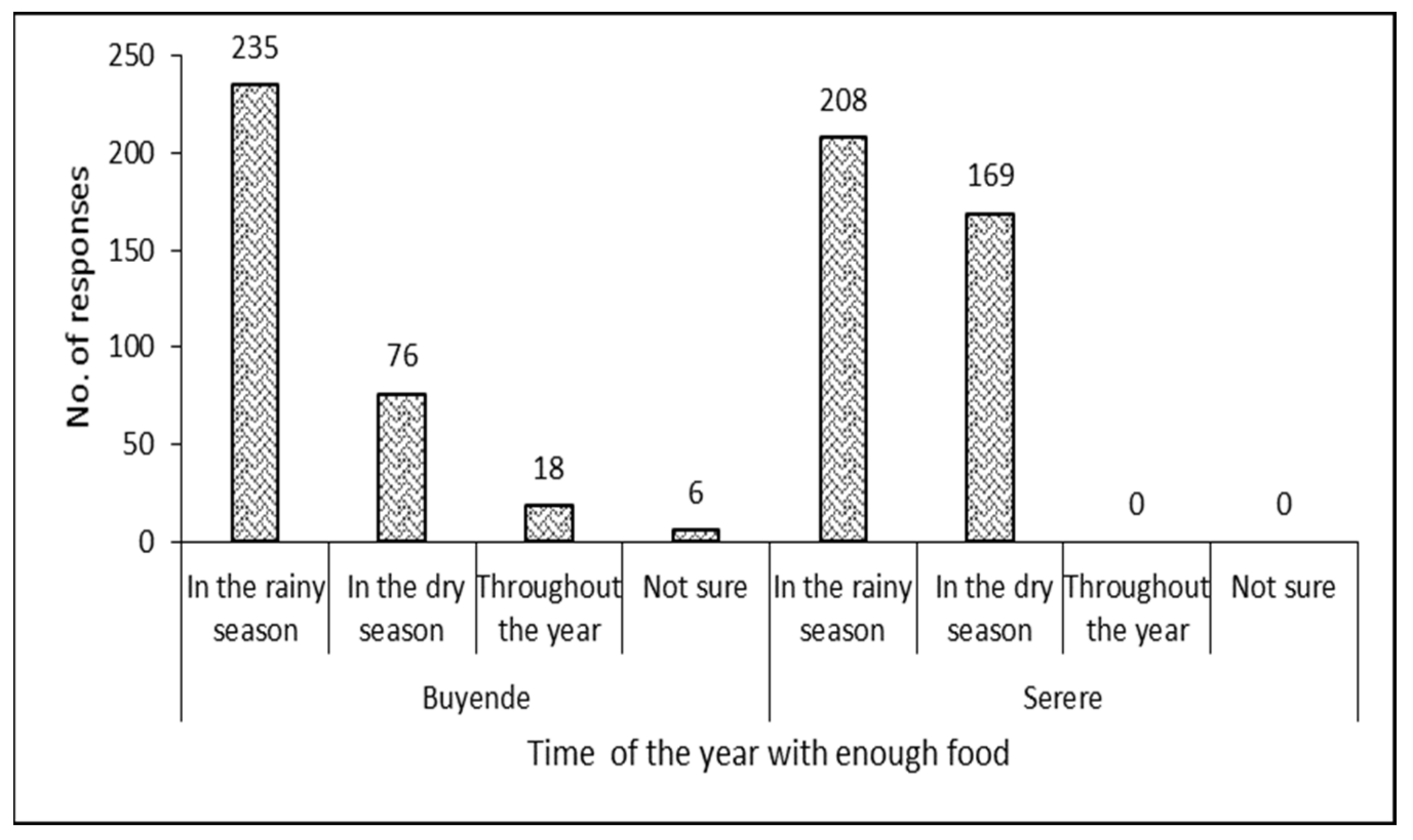
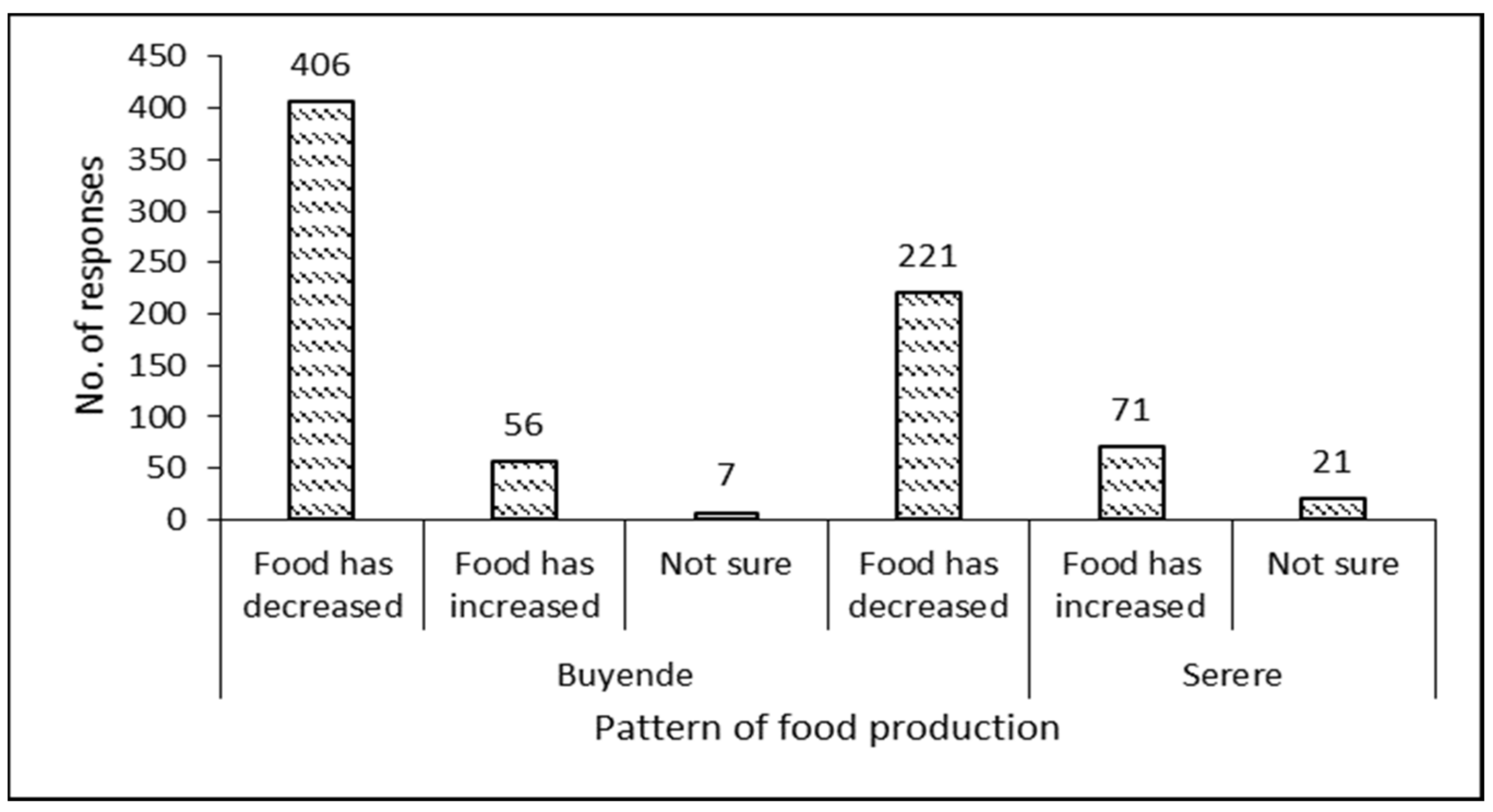
| Variable | Frequency (n = 400) | % |
|---|---|---|
| Gender | ||
| Male | 205 | 51.3 |
| Female | 195 | 48.7 |
| Education level | ||
| None | 36 | 9 |
| Primary | 167 | 41.7 |
| Secondary | 145 | 36.3 |
| Tertiary | 52 | 13 |
| Household Head type | ||
| Male-headed | 321 | 80.3 |
| Female-headed | 72 | 18 |
| Older person-headed | 2 | 0.5 |
| Child-headed | 5 | 1.2 |
| No. Household members (in years) | ||
| Below 18 | 313 | 27.4 |
| 18–25 | 260 | 22.8 |
| 26–35 | 221 | 19.4 |
| 36–50 | 189 | 16.5 |
| Above 50 | 159 | 13.9 |
| Variable | Frequency (n = 406) | % |
|---|---|---|
| Gender | ||
| Male | 203 | 50 |
| Female | 203 | 50 |
| Education level | ||
| None | 88 | 21.7 |
| Primary | 264 | 65 |
| Secondary | 53 | 13.1 |
| Tertiary | 1 | 0.2 |
| Household Head type | ||
| Male headed | 336 | 82.8 |
| Female headed | 62 | 15.3 |
| Older person headed | 6 | 1.5 |
| Child headed | 2 | 0.5 |
| No. Household members (in years) | ||
| Below 18 | 373 | 36.1 |
| 18–25 | 234 | 22.6 |
| 26–35 | 193 | 18.7 |
| 36–50 | 138 | 13.3 |
| Above 50 | 96 | 9.3 |
| Sociodemographic Characteristics | Perceptions | ||||||||||||||
|---|---|---|---|---|---|---|---|---|---|---|---|---|---|---|---|
| Aware of Climate Change/Variability | Change (Rise) in Temperature | Changes in Rainfall Intensity | Changes in Rainfall Days | Changes (Increase) in Lightning Days | |||||||||||
| X2 | df. | Sig. | X2 | df. | Sig. | X2 | df. | Sig. | X2 | df. | Sig. | X2 | df. | Sig. | |
| Sex | 8.040 | 2 | 0.018 * | 56.992 | 2 | 0.000 * | 146.187 | 2 | 0.000 * | 177.071 | 2 | 0.000 * | 2861 | 1 | 0.091 |
| Marital status | 2.151 | 8 | 0.976 | 11.808 | 8 | 0.160 | 8.170 | 8 | 0.417 | 8.271 | 8 | 0.407 | 5.544 | 4 | 0.236 |
| Age of respondent | 7.135 | 8 | 0.522 | 4.233 | 8 | 0.835 | 5.659 | 8 | 0.685 | 7.976 | 8 | 0.436 | 5.755 | 4 | 0.218 |
| Education level | 3.130 | 6 | 0.792 | 7.765 | 6 | 0.256 | 15.537 | 6 | 0.016 * | 13.911 | 6 | 0.031 * | 1.491 | 3 | 0.684 |
| Household head type | 0.755 | 8 | 0.999 | 11.764 | 8 | 0.162 | 23.630 | 8 | 0.003 * | 24.072 | 8 | 0.002 * | 0.734 | 4 | 0.947 |
| Sociodemographic Characteristics | Perceptions | ||||||||||||||
|---|---|---|---|---|---|---|---|---|---|---|---|---|---|---|---|
| Aware of Climate Change/Variability | Change (Rise) in Temperature | Changes in Rainfall Intensity | Changes in Rainfall Days | Changes (Increase) in Lightning Days | |||||||||||
| X2 | df. | Sig. | X2 | df. | Sig. | X2 | df. | Sig. | X2 | df. | Sig. | X2 | df. | Sig. | |
| Sex | 0.490 | 1 | 0.484 | 28.786 | 1 | 0.000 * | 0.013 | 1 | 0.909 | 12.970 | 1 | 0.000 * | 48.420 | 2 | 0.000 * |
| Marital status | 1.469 | 3 | 0.689 | 1.896 | 3 | 0.594 | 2.787 | 3 | 0.426 | 4.109 | 3 | 0.250 | 2.375 | 6 | 0.882 |
| Age of respondent | 2.330 | 6 | 0.887 | 5.796 | 6 | 0.446 | 3.278 | 6 | 0.773 | 12.458 | 6 | 0.052 | 17.272 | 12 | 0.140 |
| Education level | 2.743 | 3 | 0.433 | 2.765 | 3 | 0.429 | 4.493 | 3 | 0.213 | 5.514 | 3 | 0.138 | 5.261 | 6 | 0.511 |
| Household head type | 1.682 | 3 | 0.641 | 1.872 | 3 | 0.599 | 1.290 | 3 | 0.731 | 2.791 | 3 | 0.425 | 1.441 | 6 | 0.963 |
| Type of Crop | (%) |
|---|---|
| Banana | 3.8 |
| Cassava | 19.5 |
| Sweet potatoes | 17.4 |
| Beans | 7.1 |
| Maize | 18.5 |
| Millet | 8.7 |
| Sorghum | 8.6 |
| Ground nuts | 8.8 |
| Simsim | 3.9 |
| Rice | 1.8 |
| Vegetables | 1.9 |
| Total | 100 |
| Type of Crop | Use (%) | |
|---|---|---|
| Food Crop | Cash Crop | |
| Banana | 5.6 | 0.9 |
| Cassava | 17.1 | 17.1 |
| Sweet potatoes | 26.6 | 2.2 |
| Beans | 11.1 | 2.2 |
| Maize | 11.4 | 23.8 |
| Millet | 5.4 | 17.9 |
| Sorghum | 5.4 | 19.3 |
| Ground nuts | 11.1 | 3.6 |
| Simsim | 2.0 | 10.3 |
| Rice | 0.8 | 1.8 |
| Vegetables | 3.5 | 0.9 |
| Total | 100 | 100 |
| No. of Meals per Day | Current (%) | Past 5 Years (%) |
|---|---|---|
| Three meals | 43.6 | 59.7 |
| Two meals | 52.1 | 35.9 |
| One meal | 2.7 | 3.1 |
| None | 1.6 | 1.3 |
| Total | 100 | 100 |
| Strategy | Percent (%) |
|---|---|
| Settling down with family/reduced nomadism | 13.5 |
| Growing drought-resistant crops | 32.7 |
| Using drought-resistant livestock breeds | 26.1 |
| Having less/fewer meals a day | 14.5 |
| Nothing/not sure/just look on | 13.2 |
| Total | 100 |
| Percent (%) | |
|---|---|
| Buying food (e.g., beans and maize flour) | 34.3 |
| Settling down with family/reduced nomadism | 7.5 |
| Growing crops | 16.7 |
| Increased production | 19.6 |
| Having less/fewer meals a day | 15.9 |
| Nothing/not sure/just look on | 6.1 |
| Total | 100 |
| Coping Mechanism | X2 | df. | Sig. |
|---|---|---|---|
| Settling down with family/reduced nomadism | 2.049 | 6 | 0.915 |
| Growing drought resistant crops | 74.444 | 38 | 0.000 * |
| Using drought resistant livestock breeds | 6.753 | 8 | 0.564 |
| Having less/fewer meals a day | 152.979 | 36 | 0.000 * |
| Nothing/not sure/just look on | 7.461 | 6 | 0.280 |
| Buying food (e.g., beans and maize flour) | 8.383 | 8 | 0.397 |
| Growing a variety of crops | 93.416 | 40 | 0.000 * |
| Early planting and harvesting | 160.561 | 46 | 0.000 * |
| Using improved or resistant varieties of crops | 10.456 | 8 | 0.234 |
Publisher’s Note: MDPI stays neutral with regard to jurisdictional claims in published maps and institutional affiliations. |
© 2021 by the authors. Licensee MDPI, Basel, Switzerland. This article is an open access article distributed under the terms and conditions of the Creative Commons Attribution (CC BY) license (https://creativecommons.org/licenses/by/4.0/).
Share and Cite
Nsabagwa, M.; Mwije, A.; Nimusiima, A.; Odongo, R.I.; Ogwang, B.A.; Wasswa, P.; Mugume, I.; Basalirwa, C.; Nalwanga, F.; Kakuru, R.; et al. Examining the Ability of Communities to Cope with Food Insecurity due to Climate Change. Sustainability 2021, 13, 11047. https://doi.org/10.3390/su131911047
Nsabagwa M, Mwije A, Nimusiima A, Odongo RI, Ogwang BA, Wasswa P, Mugume I, Basalirwa C, Nalwanga F, Kakuru R, et al. Examining the Ability of Communities to Cope with Food Insecurity due to Climate Change. Sustainability. 2021; 13(19):11047. https://doi.org/10.3390/su131911047
Chicago/Turabian StyleNsabagwa, Mary, Anthony Mwije, Alex Nimusiima, Ronald Inguula Odongo, Bob Alex Ogwang, Peter Wasswa, Isaac Mugume, Charles Basalirwa, Faridah Nalwanga, Robert Kakuru, and et al. 2021. "Examining the Ability of Communities to Cope with Food Insecurity due to Climate Change" Sustainability 13, no. 19: 11047. https://doi.org/10.3390/su131911047
APA StyleNsabagwa, M., Mwije, A., Nimusiima, A., Odongo, R. I., Ogwang, B. A., Wasswa, P., Mugume, I., Basalirwa, C., Nalwanga, F., Kakuru, R., Nahayo, S., Sansa-Otim, J., & Musiime, I. (2021). Examining the Ability of Communities to Cope with Food Insecurity due to Climate Change. Sustainability, 13(19), 11047. https://doi.org/10.3390/su131911047







